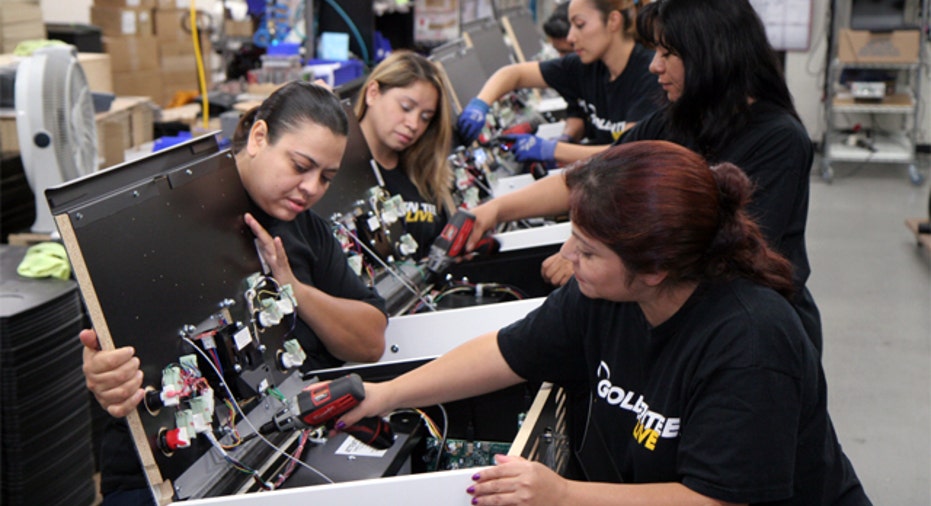Job Growth, Wages Seen Picking Up in October

U.S. employers likely stepped up hiring in October and boosted wages for workers, which could effectively seal the case for a December interest rate increase from the Federal Reserve.
Nonfarm payrolls likely increased by 175,000 jobs last month after rising 156,000 in September, according to a Reuters survey of economists. The unemployment rate is forecast falling one-tenth of a percentage point to 4.9 percent.
"The expected payroll gains should easily meet the Fed's criteria of some further progress in the labor market, which leaves us with a rate hike in December," said Harm Bandholz, chief U.S. economist at UniCredit Research in New York.
The Labor Department will release its closely watched employment report on Friday at 8:30 a.m., four days before the Nov. 8 presidential election.
The report will come on the heels of data last week showing an acceleration in economic growth in the third quarter. But economists see little impact from the report on an increasingly bitter and divisive campaign.
"There is so much noise out there right now, everyone is screaming from the rooftops. I just don't know that any particular data point is going to have a great bearing on the election, in and of itself," said Sam Bullard, senior economist at Wells Fargo Securities in Charlotte, North Carolina.
Though the U.S. central bank is expected to increase borrowing costs next month, that decision will likely depend on the outcome of Tuesday's election. The tight race between Democratic candidate Hillary Clinton and her Republican rival Donald Trump has rattled financial markets.
The Fed on Wednesday left interest rates unchanged but said its monetary policy-setting committee "judges that the case for an increase in the federal funds rate has continued to strengthen." It lifted its benchmark overnight interest rate last December for the first time in nearly a decade.
"The election could still derail the Fed's plans, particularly if a very close result led to one or both candidates contesting it via the courts," said Paul Ashworth, chief economist at Capital Economics in Toronto.
TREND HAS SLOWED
Despite October's anticipated pick-up in job gains, the trend in employment growth has slowed as the labor market nears full employment and the economy's recovery from the 2007-09 recession shows signs of aging.
Employment growth so far this year has averaged 178,000 jobs per month, down from an average gain of 229,000 per month in 2015. Still, the monthly job gains are more than enough to absorb new entrants into the labor market.
Fed Chair Janet Yellen has said the economy needs to create just under 100,000 jobs a month to keep up with growth in the work-age population.
The prospects of an interest rate hike next month could also be bolstered by an anticipated solid rise in wages. Average hourly earnings are expected to have increased 0.3 percent in October after advancing 0.2 percent in September.
The lift from a calendar quirk could push the year-on-year increase to 2.7 percent from 2.6 percent in September. The Fed on Wednesday struck a fairly upbeat note on inflation, saying price pressures had "increased somewhat since earlier this year."
Despite the labor market nearing full employment, wage growth has remained moderate. Economists blame this on a low labor force participation rate.
The participation rate, or the share of working-age Americans who are employed or at least looking for a job, is hovering near multi-decade lows, in part reflecting demographic changes.
A solid payrolls gain accompanied by a pick-up in wages could support consumer spending heading into the holiday season, and in turn keep the economy on a relatively higher growth path.
Economists expect a marginal impact on job growth from hurricane Matthew, which lashed the southeast of the country last month, causing extensive flooding. However, the storm could have reduced the average workweek in October.
Payrolls could get a boost from early holiday season hiring.
"With labor markets tight, companies have started earlier each year to secure scarce temporary workers for the upcoming holiday season," said Michelle Girard, chief economist at RBS in Stamford, Connecticut.
"If done earlier than the seasonal factors expect, this seasonal hiring could bias the numbers higher."
Manufacturing employment likely fell for a third straight month in October, while construction payrolls probably rose for a second consecutive month.
(Reporting by Lucia Mutikani; Editing by Chizu Nomiyama)



















